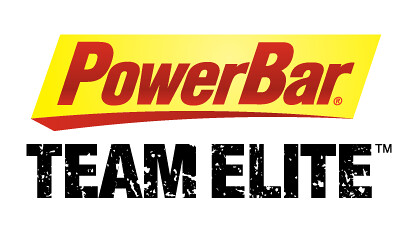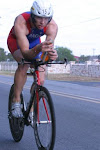My last two races of 2010 will be Austin 70.3 and Ironman Cozumel. I'm a big guy (trying to get down to 172 lbs before Cozumel), and we usually don't do so well in the heat.
Here's a great post from The Science of Sport about what happens to people when they exercise in warm temperatures. Once you're there you can follow another link that discusses why size does matter in the heat. Here's a clip:
"
When size does matter...The first thing (and this is a dramatically summarized version) is that
the winner has to be small in size. All things being equal (which we concede they never are!), the smaller athlete will win a race in the heat. Many studies have shown this, and the equations that we use to model performances in the heat suggest the same. Basically, it boils down to a balance between height production and heat loss. Heat production is dependent on body size and running speed, while heat loss is a function of body surface area, and the environment. Obviously, the environment is the same for everyone, but body size is not. The smaller the athlete, the less heat they produce, but their heat loss is not reduced by as much and the end result is that the
smaller athlete will store less heat running at a certain speed than the bigger athlete. Ultimately, this means that a smaller athlete can afford to run slightly faster before their body temperature rises. Big advantage! This is of course a oversimplification, but it does illustrate the point that when the mercury starts climbing, the advantage lies with a smaller runner."
So when I show up to race in Cozumel, I'll be facing a few obstacles, since the temperatures here in Portlandia have dropped into the 50s and 60s during the day. The answer? Train indoors, in the heat. This weekend, which saw the return of Portland's winter weather (steady rain, 50s), found me training indoors at the excellent Athletes Lounge Training Facility. I did both my long workouts (2 hour run on Saturday and 6.5 hour brick on Sunday) indoors. I didn't use a fan for the run, and I turned the heat up to around 80 for the bike/brick (I did use a light fan for the bike portion of the brick). I'm trying to figure out my sweat rate, and here's the data:
Saturday, 2 hour long run with tempo intervals (3x25' @ 6:30-6:45/mile)
Weight Before: 179.4
Weight Afterward: 174.2 (2.9 % drop in body weight, a moderate performance liability)
Fluid Consumed: 63 oz
Weight lost plus fluid consumed=9 lbs.
Fluid lost per hour (total weight lost/# of hours exercised)=72 oz per hour.
That seems a very high amount of fluid lost per hour, and somewhat alarming, too. If I'm already disadvantaged in the heat because of my size, I'm worried I'll be disadvantaged further by my ridiculous sweat rate. I performed another sweat rate test yesterday on the bike and came up with this information:
Sunday, 6 hour ride with tempo intervals followed by 30 minute run with pace intervals
Weight before: 181.4 (how did I gain 2 lbs in one day?)
Weight after: 173 (4.5 % drop in body weight, a significant performance liability)
Fluid consumed: 200 oz (12.5 lbs)
Weight lost plus fluid consumed: 21 lbs.
Fluid lost per hour: 52 oz per hour.
It's informative to see that I lose less fluid while cycling than while running. This seems to make sense, given the relative differences in effort between cycling and running. Various sources articulate that one should aim to replace between 1/3 and 1/2 of your fluid loss per hour. So for running I should aim for at least 23.76 and 36 oz of fluid. The maximum absorbtion per hour is 33 oz (rough/average size of stomachs out there), so I'm going to aim for that number, especially in the heat. That means that, on the run, I'll still be losing 2.5 lbs per hour (1.4% of my body weight), so if I want to be successful in Cozumel, I'll have to be significantly hydrated before I start the run, since I'll be 3-4.5% dehydrated in the last hour of the marathon, which is a performance problem.
So on the bike, if I lost 52 oz/hour and put in 33 oz/hour, I'll lose 20 oz per hour (1.25 lbs). If the bike takes 4.5 hours that means 90 oz low (5.625 lbs, or 3.1%). 3.1% dehydrated is too dehydrated to start a hot marathon, so I'm gonna have to figure something out, like getting more used to training in the heat.
The amount of sweat lost this weekend was pretty gross, I gotta say. A white foamy slick formed on the belt of the treadmill on Saturday.







